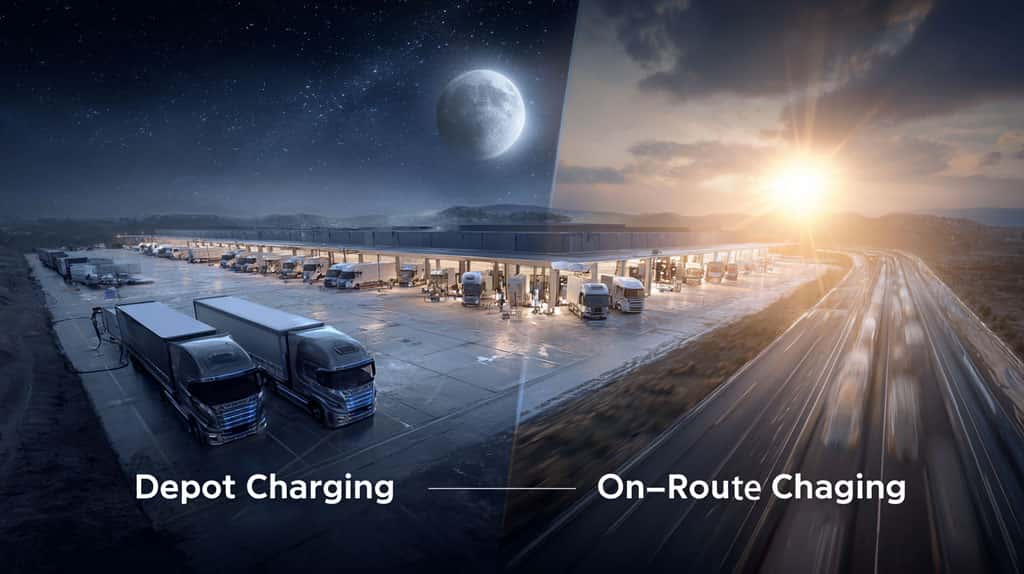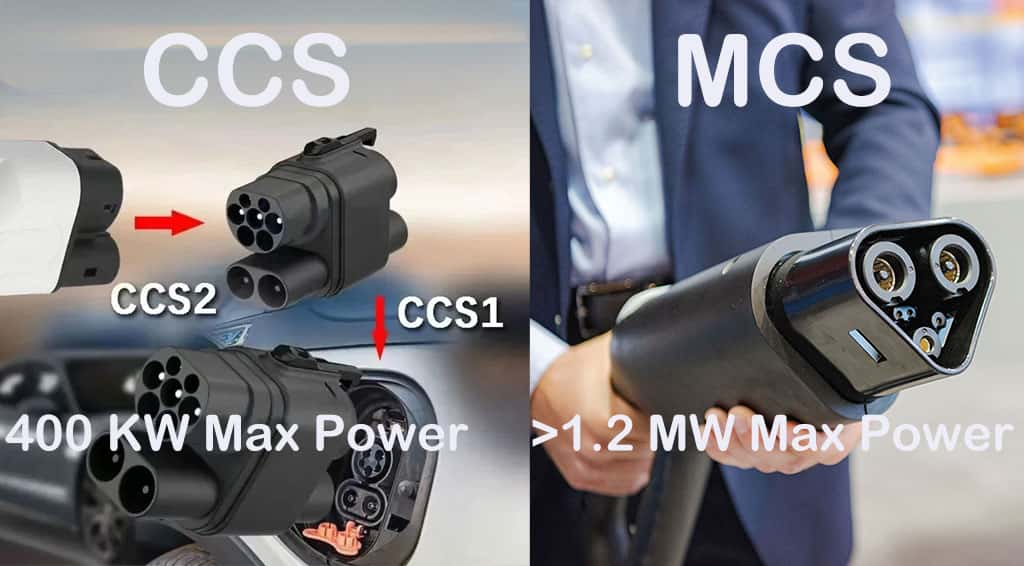The rumble of diesel engines has powered global logistics for a century. But a quieter, more powerful revolution is underway. The shift to electric fleets is no longer a distant concept; it's a strategic imperative. Yet, this transition comes with a colossal challenge: Heavy EV Charging. This isn't about plugging in a car overnight. It's about rethinking energy, infrastructure, and operations from the ground up.
Powering an 80,000-pound, long-haul truck requires an immense amount of energy, delivered quickly and reliably. For fleet managers and logistics operators, the questions are urgent and complex. What technology do we need? How do we design our depots? What will it all cost?
This definitive guide will walk you through every step of the process. We will demystify the technology, provide actionable frameworks for strategic planning, and break down the costs involved. This is your handbook for navigating the high-power world of heavy-duty EV charging.
1. A Different Beast: Why Truck Charging Isn't Like Car Charging
The first step in planning is to appreciate the enormous difference in scale. If charging a passenger car is like filling a bucket with a garden hose, Heavy EV Charging is like filling a swimming pool with a fire hose. The core challenges boil down to three key areas: power, time, and space.
•Immense Power Demand: A typical electric car has a battery between 60-100 kWh. A Class 8 electric semi-truck can have a battery pack ranging from 500 kWh to over 1,000 kWh (1 MWh). The energy needed for a single truck charge could power a house for days.
•Critical Time Factor: In logistics, time is money. A truck's "dwell time"—the time it sits idle while loading or during driver breaks—is a critical window for charging. Charging must be fast enough to fit into these operational schedules without hurting efficiency.
•Vast Space Requirements: Heavy trucks need large, accessible areas to maneuver. Charging stations must accommodate long trailers and provide safe, pull-through access, which demands significantly more real estate than a standard car charging spot.
| Feature | Passenger Electric Vehicle (EV) | Class 8 Electric Truck (Heavy EV) |
| Average Battery Size | 75 kWh | 750 kWh+ |
| Typical Charging Power | 50-250 kW | 350 kW to over 1,200 kW (1.2 MW) |
| Energy for Full Charge | Equivalent to ~3 days of home energy | Equivalent to ~1 month of home energy |
| Physical Footprint | Standard parking space | Requires large pull-through bay |
2. The Core Technology: Your High-Power Charging Options
Choosing the right hardware is fundamental. While the world of EV charging is filled with acronyms, for heavy vehicles, the conversation centers on two key standards. Understanding them is crucial for future-proofing your charging infrastructure.
CCS: The Established Standard
The Combined Charging System (CCS) is the dominant standard for passenger cars and light-duty commercial vehicles in North America and Europe. It uses a single plug for both slower AC charging and faster DC charging.
For heavy trucks, CCS (specifically CCS1 in North America and CCS2 in Europe) is a viable option for certain applications, particularly overnight depot charging where speed is less critical. Its power output typically maxes out around 350-400 kW. For a massive truck battery, this still means several hours for a full charge. For fleets operating globally, understanding the physical and technical difference between CCS1 and CCS2 is an important first step.
MCS: The Megawatt Future
The real game-changer for electric truck charging is the Megawatt Charging System (MCS). This is a new, global standard developed specifically for the unique needs of heavy-duty vehicles. A coalition of industry leaders, managed by the association CharIN, designed MCS to deliver power on a whole new level.
Key features of the MCS standard include:
•Massive Power Delivery: MCS is designed to deliver over 1 megawatt (1,000 kW) of power, with a future-proof design capable of up to 3.75 MW. This could allow a truck to add hundreds of miles of range during a standard 30-45 minute driver break.
•A Single, Ergonomic Plug: The plug is designed for easy handling and can only be inserted one way, ensuring safety and reliability for a high-power connection.
•Future-Proofing: Adopting MCS ensures your infrastructure will be compatible with the next generation of electric trucks from all major manufacturers.
While MCS is still in its early rollout phase, it is the undisputed future for on-route and fast depot charging.
3. Strategic Decisions: Depot vs. On-Route Charging

Your charging strategy will determine the success of your fleet electrification. There is no one-size-fits-all solution. Your choice will depend entirely on your fleet's unique operations, whether you are running predictable local routes or unpredictable long-haul journeys.
Depot Charging: Your Home Base Advantage
Depot charging happens at your privately-owned facility, typically overnight or during long idle periods. This is the backbone of fleet charging solutions, especially for vehicles that return to base every day.
•How it works: You can use a mix of slower, Level 2 AC chargers or moderately-powered DC fast chargers (like CCS). Since charging can happen over 8-10 hours, you don't always need the most powerful (or most expensive) hardware.
•Best for: This strategy is highly effective and cost-efficient for EV Charging for Last-Mile Fleets. Delivery vans, drayage trucks, and regional haulers benefit immensely from the reliability and lower overnight electricity rates associated with depot charging.
On-Route Charging: Powering the Long Haul
For trucks that travel hundreds of miles a day, stopping at a central depot is not an option. They need to recharge on the road, similar to how diesel trucks refuel at truck stops today. This is where opportunity charging with MCS becomes essential.
•How it works: Public or semi-private charging hubs are built along major freight corridors. A driver pulls in during a mandatory break, plugs into an MCS charger, and adds significant range in under an hour.
•The Challenge: This approach is a massive undertaking. The process of How to Design Electric Long-Haul Truck Charging hubs involves huge upfront investment, complex grid upgrades, and strategic site selection. It represents a new frontier for energy and infrastructure companies.
4. The Blueprint: Your 5-Step Depot Planning Guide
Building your own charging depot is a major construction project. A successful outcome requires meticulous planning far beyond just buying chargers. A holistic EV Charging Station Design is the foundation for an efficient, safe, and scalable operation.
Step 1: Site Assessment and Layout
Before you do anything else, analyze your site. Consider truck flow—how will 80,000-pound vehicles enter, maneuver, charge, and exit safely without creating bottlenecks? Pull-through stalls are often superior to back-in stalls for semi-trucks. You must also plan for safety bollards, proper lighting, and cable management systems to prevent damage and accidents.
Step 2: The #1 Hurdle - Grid Connection
This is the most critical and often longest lead-time item. You cannot simply install a dozen fast chargers. You must work with your local utility company to determine if the local grid can handle the immense new load. This process can involve substation upgrades and can take 18 months or more. Start this conversation on day one.
Step 3: Smart Charging and Load Management
Charging all your trucks at maximum power simultaneously could trigger astronomical electricity bills (due to demand charges) and overwhelm your grid connection. The solution is intelligent software. Implementing smart EV charging load management is not optional; it's essential for controlling costs. This software can automatically balance power distribution, prioritize trucks that need to leave first, and shift charging to off-peak hours when electricity is cheapest.
Step 4: The Future is Interactive - Vehicle-to-Grid (V2G)
Think of your fleet's massive batteries as a collective energy asset. The next frontier is bidirectional charging. With the right technology, V2G allows your parked trucks to not only draw power from the grid but also send it back during peak demand. This can help stabilize the grid and create a significant new revenue stream for your company, turning your fleet into a virtual power plant.
Step 5: Hardware Selection and Installation
Finally, you select the hardware. Your choice will depend on your strategy—lower-power DC chargers for overnight or top-of-the-line MCS chargers for quick turnarounds. When calculating your budget, remember that the total EVehicle Charging Station Cost includes much more than the chargers themselves. The full picture of EV Charger Cost and Installation must account for transformers, switchgear, trenching, concrete pads, and software integration.
5. The Bottom Line: Costs, TCO, and ROI
The upfront investment in Heavy EV Charging is significant. However, a forward-thinking analysis focuses on the Total Cost of Ownership (TCO). While the initial capital expenditure is high, electric fleets offer substantial long-term savings.
Key factors that lower TCO include:
•Reduced Fuel Costs: Electricity is consistently cheaper per mile than diesel.
•Lower Maintenance: Electric powertrains have far fewer moving parts, leading to significant savings on maintenance and repairs.
•Government Incentives: Many federal and state programs offer generous grants and tax credits for both the vehicles and the charging infrastructure.
Building a detailed business case that models these variables is essential for securing investment and proving the long-term profitability of your fleet electrification project.
Begin Your Electrification Journey Today
The transition to charging heavy electric vehicles is a complex, capital-intensive journey, but it is no longer a matter of "if," but "when." The technology is here, the standards are set, and the economic and environmental benefits are clear.
Success does not come from simply buying chargers. It comes from a holistic strategy that integrates operational needs, site design, grid realities, and intelligent software. By planning carefully and starting the process early—especially conversations with your utility—you can build a robust, efficient, and profitable electric fleet that will power the future of logistics.
Authoritative Sources
1.CharIN e.V. - Megawatt Charging System (MCS): https://www.charin.global/technology/mcs/
2.U.S. Department of Energy - Alternative Fuels Data Center - Developing Infrastructure for Electric Vehicles: https://afdc.energy.gov/fuels/electricity_infrastructure.html
3.International Energy Agency (IEA) - Global EV Outlook 2024 - Trucks and buses: https://www.iea.org/reports/global-ev-outlook-2024/trends-in-electric-heavy-duty-vehicles
4.McKinsey & Company - Preparing the world for zero-emission trucks: https://www.mckinsey.com/industries/automotive-and-assembly/our-insights/preparing-the-world-for-zero-emission-trucks
5.Siemens - eTruck Depot Charging Solutions: https://www.siemens.com/global/en/products/energy/medium-voltage/solutions/emobility/etruck-depot.html
Post time: Jul-03-2025




